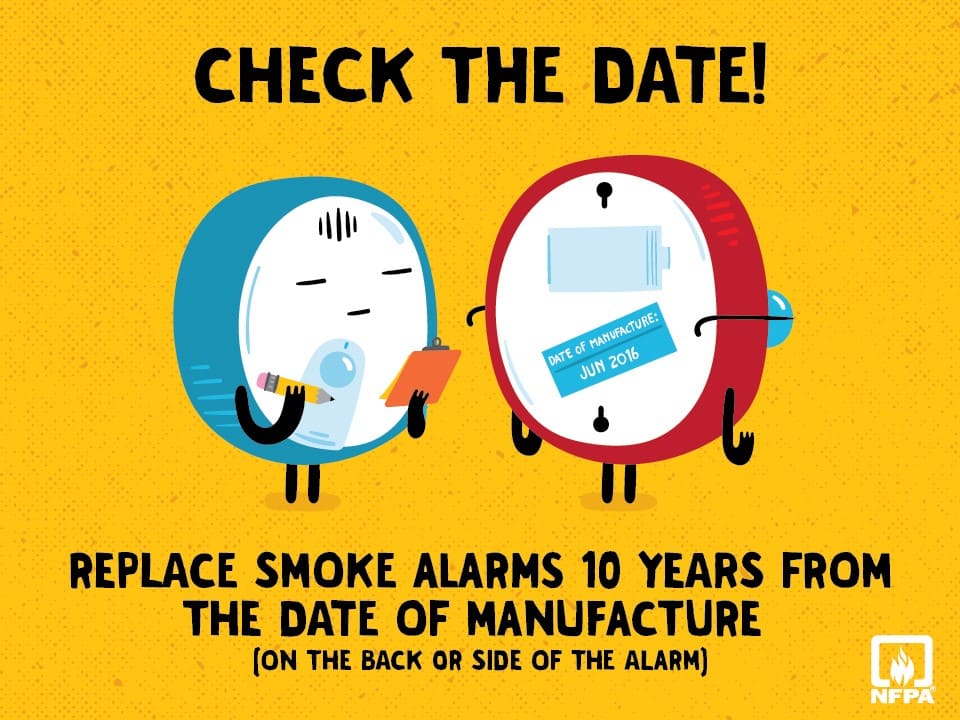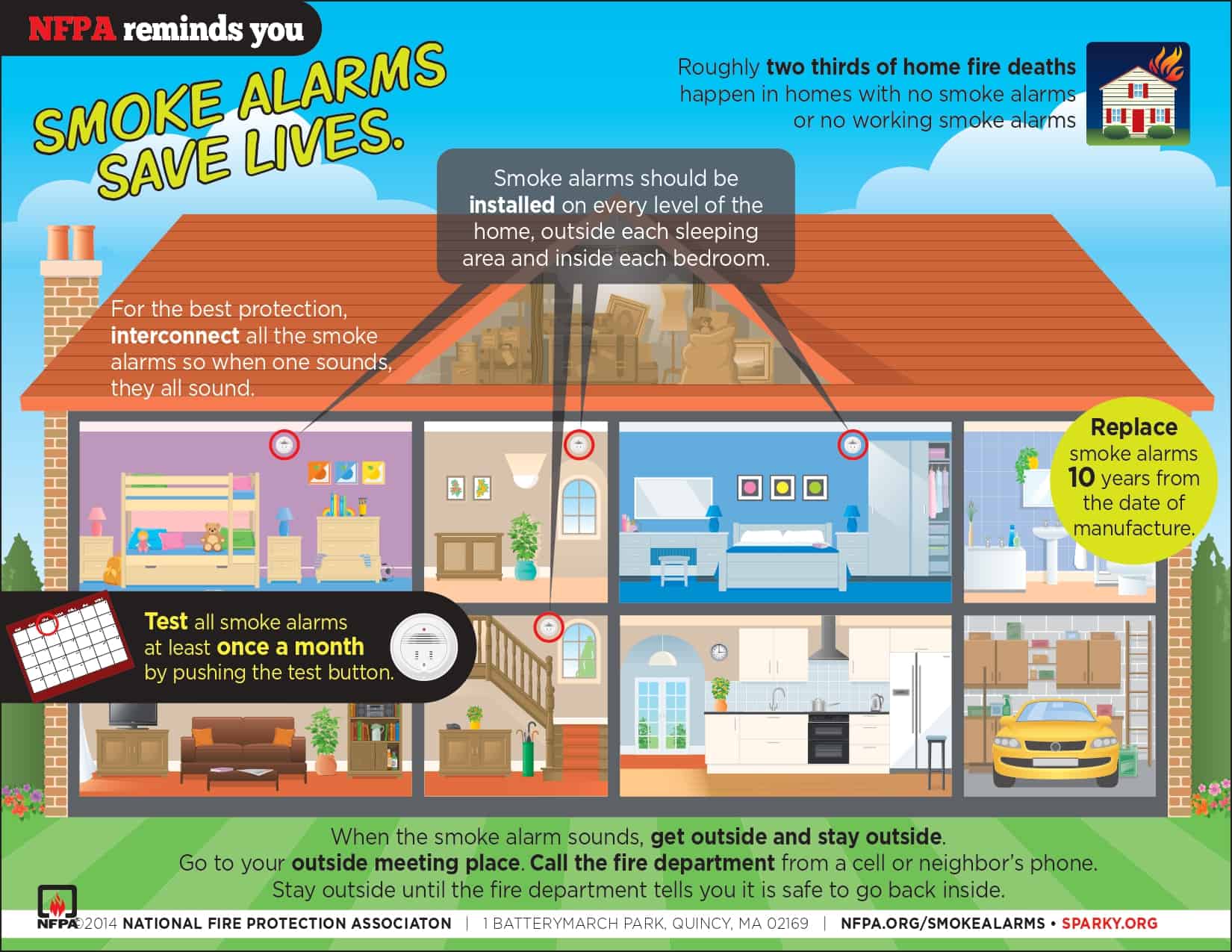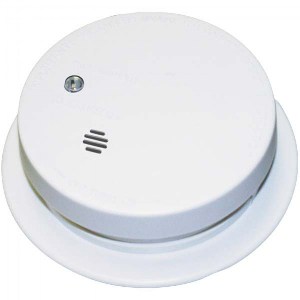Smoke Alarms
Collectively, we protect structures ranging from trailers to multi-million dollar properties.
Smoke Detector Information

You’re going about your day — making dinner, doing laundry, or just lounging — when you notice your smoke detector blinking red. You start to worry that it’s broken or that it’s detected a fire but the alarm isn’t going off.
Don’t panic — there are a lot of reasons a smoke detector could start to blink red. Different manufacturers use static and blinking lights to help indicate if a smoke detector is working properly, needs replacement, or simply needs maintenance.
Check out a few of the reasons your smoke detector might start blinking red and learn how to install and maintain one in your home.
Reasons Your Smoke Detector Might be Blinking Red
Most smoke detectors have an indicator light that is used to keep you updated on the status of your alarm. You should always read the instructions that come with a smoke detector to better understand what different light colors and blinking patterns mean for that model and brand. Knowing how each part of your fire safety equipment works — including indicator lights — can help you protect your family and property from fire.

A smoke detector blinking red could mean:
It’s Working Properly: Some brands use an occasional red blinking light to indicate the unit is working properly. Check with your manufacturer to make sure.
Lingering Smoke After the Alarm: After a smoke alarm goes off, smoke might be lingering around the unit. Many smoke detectors blink red during the period when smoke is clearing the area after the initial alarm.

You Need to Run a Test: Regularly testing your smoke alarms helps you spot problems before a fire occurs. Your alarm manufacturer may have included a blinking red light to let you know it’s time to test the alarm again. The Batteries are Low: Usually accompanied by a loud beep, a blinking red light could mean the batteries in the unit are low. Consider adding fresh batteries and running a test to make sure it’s working. It Needs to Be Replaced: Smoke detectors don’t last forever. You can check the back of the alarm to learn when the unit was manufactured. If it’s 10 years or older, it’s time to replace it. There’s Dust in the Chamber: Dust particles, pet hair, and other debris floats throughout the air in your home and can get into the chamber of your smoke detectors. Smoke alarm brands sometimes include a warning light to let you know there’s debris in the detector that needs to be cleaned out. Smoke is Detected: If you hear a loud beeping along with the blinking red light, your smoke detector may be going off. Check your home for signs of smoke or fire to make sure there’s no danger.
Smoke Detector Maintenance Tips
Although smoke detectors require a lot less maintenance than a lot of safety equipment, you still need to regularly check your detectors to make sure they’re working. Regularly testing and maintaining your smoke alarms lowers the risk of a false alarm — or worse — an alarm that doesn’t go off when a fire starts.
Learn How to Install a Smoke Detector Correctly: If you buy a new home or need to replace an old smoke detector, you want to know it’s done correctly. Carefully read the instructions and follow the steps to install and test your new smoke detector.
Perform Monthly Tests: Your smoke detector should have a button that lets you test the alarm. Simply press the button and you should hear the loud beeping of the alarm for a few seconds. Test your alarms once a month to ensure they’re in good condition.
Clean Smoke Detectors Regularly: Using a vacuum or duster, carefully wipe the dust and debris from outside the alarm. You may also need to take the alarm off the wall or ceiling and open the chamber to remove dust that’s gotten inside the detector. Upgrade Outdated Smoke Alarms: Whenever you move into a new home, first check the date the smoke detectors were manufactured. If an alarm is old, replace it with a new one. If you’ve lived in your home for a while, it’s a good idea to check the dates of your smoke detectors and make a note of when they need to be replaced.
Swap Smoke Detector Batteries: Smoke detectors rely on batteries to help detect fires in your home. Even if you have a hardwired smoke alarm, each alarm should have batteries it can use as a backup if the house loses power. Be sure to regularly swap your smoke detector batteries to ensure your alarms can still run if the power goes out and a fire starts.

Critical Placement
Care & Cleaning
Dust can cause false alarms. Use a vacuum cleaner attachment to remove dust and cobwebs. Read manufacturer’s instructions for more information. If painting near a smoke alarm, use a shield to keep the paint out of the unit. Be certain to remove the shield when you finish painting.
Keep Them Working
Test your alarms monthly. Replace batteries twice a year or when you hear the low battery “chirp”. Replace smoke alarms every seven to ten years.

